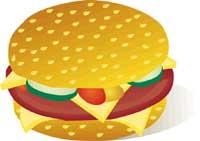Bowel cleaner: Fiber
We know more and more about fiber. It is currently fully assumed that fiber is one of the ingredients of food, but until recently it was considered as residue after digestion. As we have been acquiring information, we have been able to learn more about the use of fiber.
The fiber is found in vegetables, fruits, legumes and whole grains, not affected by the gastric juices that are secreted in the lyserics, so it passes directly to the large intestine.

What does fiber do? In general, it has two main functions in our body. On the one hand, when arriving to the stomach increases the food bolus, which decreases digestion and generates a feeling of satiety; and on the other hand, when not getting smoothed when arriving to the intestine, creates a slippery medium facilitating the transport of certain particles. This second function allows fiber to eliminate cholesterol, sugar, toxins, etc.
As for consumption, an average of 30 grams of fiber is recommended. To better understand, just eat 3 units of fruit and a salad or a vegetable dish so that we can assimilate the amount of fiber our body will appreciate.
However, the amount of fiber that contains food is quite variable. The amount of fibres of origin of fruits and vegetables is quite stable, being the richest in fiber green beans, spinach and peas. As for the fruits, the more mature, the richer they are and, in addition, the better if they are consumed with skin, although it must be taken into account that this can cause cleaning problems. On the other hand, remember that juices do not contain fiber and it is recommended to chop the vegetables and beans and beans in the electric mixer, since in puree lose fiber. Bread, flour, cereals, or rice are much richer in fiber when they are whole. Consume preferably.
In our society, however, there is some admiration for “refined” foods. However, foods rich in fiber are not included in this group, so the amount of fiber we consume daily is less and less.
As a result, more and more frequent intestinal diseases such as constipation, hemorrhoids, water retention, intestinal cancer, etc. To avoid them it is easy to consume foods rich in fibers. The tips of this number serve for it.
- Substitutes of pastry fats: the special starches have worked hard and have finally achieved: Maltodextrin N-Lite B will replace pastry fats. The new substance does not alter the properties of sweets and at the same time it will be possible to avoid those calories that worry the consumer.
- Sugar and heart disease At the moment it is a hypothesis, but lately it is listening quite a lot. According to this, there is a direct relationship between the risk of heart disease and the amount of glucose in the blood, so that those with a high glucose level are included in the risk group, that is, 110-120/100 ml. If this hypothesis is confirmed, we should address new ways to avoid heart disease, such as blood glucose reduction systems.
Buletina
Bidali zure helbide elektronikoa eta jaso asteroko buletina zure sarrera-ontzian











